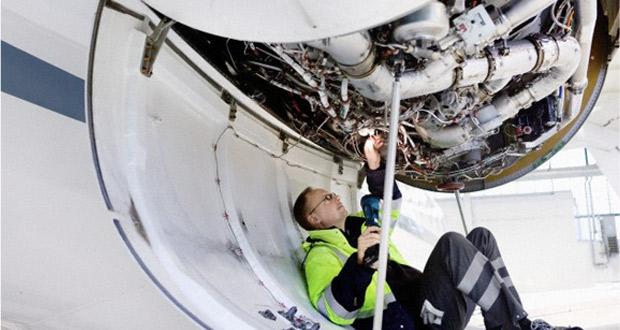
The aviation aftermarket is just in the first phase of a long adjustment to the virus crisis. Coming up in the long road back to health will probably be a catch-up in sluggish part sales next year.
The flood of used parts will have major consequences on both OEM and PMA sales. Consolidation and some changes in OEM attitudes to the aftermarket are expected as well.
All these trends were discussed by an aftermarket exec and an aviation analyst in a special panel at the annual conference of the Modification and Replacement Parts Association.
Four airlines that are regular customers of GA Telesis are spending only about half as much as they were before the virus crisis, notes Jason Reed president of GA’s flight solutions group.
And of that spend, 80% is on maintenance and only 20% on procurement of parts, reversing the usual ratio before the traffic slump. “They are deferring as much as they can,” Reed stresses.
Carriers are only flying 50-60% of their fleets, and if a maintenance issue arises with a flying aircraft, the airline parks it and deploys a spare plane, Reed says. “The majority are deferring everything.”
The good news, the GA exec believes, is that “there is a bow wave coming,” when deferred MRO and part procurement must be made up. Reed expects a catch-up in the second quarter of 2021.
One exception may be heavy work on engines. With something like 6,000 engines expected to be torn down, most carriers are not thinking about engine shop visits now. And all those engine and airframe tear-downs will form a headwind for PMA purchases.
Still, a new era of economy in part acquisition may be coming. Reed says several Middle East airlines purchased so many aircraft that they were getting parts free from OEMs due to initial purchase credits.
Now that they are not taking more aircraft, those credits have been used up, and these carriers will be looking to both used parts and PMAs to save money. The challenge for PMAs is the sheer volume of used parts from coming tear-downs.
But one sector where PMAs may remain popular is in cabin interiors. PMA demand here will depend on OEMs’ ability to deliver materials in a timely manner.
Reed expects significant consolidation in the aftermarket. Among the four tiers of suppliers, he thinks tiers two and three will be squeezed together. And many small aftermarket companies that cannot “weather the storm” will be acquired.
Ken Herbert managing director of Canaccord Genuity, agrees with Reed that component OEMs are seeing repairs hold up better that part sales. And there are special pressures on parts for initial provisioning, due to changes in aircraft delivery schedules. Herbert expects parts for initial provisioning to be the last portion of the market to recover.
But he too sees a catch-up in part acquisition coming. “Airlines are not the best at using green time. When traffic comes back, they will be low on inventory, and we will see a snap-back when it happens.”
Herbert expects the airframe OEMs to retrench a bit on their aftermarket plans.
Boeing will focus more on its core business, and Airbus is likely to as well, in his view. But component OEMs, threatened by both PMAs and used parts, will probably invest more in the aftermarket. “Lots of component OEMs will step up in the aftermarket.”
Like Reed, the Cannacord analyst expects more M&A activity in aerospace, but says it is still a bit early for deals to close. “Interest rates are low, and there is plenty of capital, but there is uncertainty. There is a disconnect between valuations by buyers and sellers.”
Reed thinks the big question for PMA sales is whether they will become attractive to carriers outside the traditional PMA markets of North America, Europe and North Asia.





